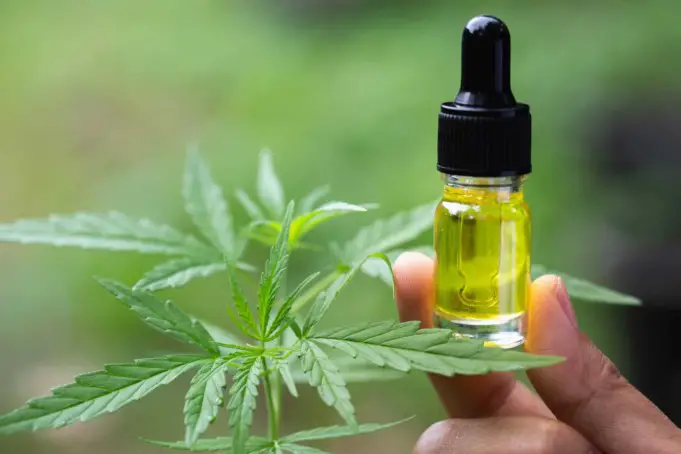With over 20 years of research behind it, CBD oil has exploded on the modern marketplace and is one of the most talked about alternative health lifestyle products.
Celebrities ranging from Emma Roberts to Gwyneth Paltrow have extolled on the benefits of using CBD as part of their health and beauty regimens.
While most users know that CBD comes from industrial hemp, what they often don’t know is the process that goes into making pure CBD oil. From farm to laboratory to bottle, extracting cannabidiol and the other cannabinoids is a careful process that takes years to master.
Before you reach for your next CBD-based product, it’s crucial to understand what’s actually inside that dropper. This is what you need to know about “Pure” CBD oil, and why it may be better for you than just anything labeled CBD.
How Does CBD Work in my Body?
CBD oil starts working when you use it in your preferred method: sublingually using a tincture dropper, in capsule form, or through a CBD edible.
Once it enters your body, it travels through the endocannabinoid system: a large set of receptors that have been scientifically tied to regulating everything from anxiety to gastrointestinal health.
Science suggests that CBD works within these receptors to create balance and well-being in our bodies, without compromising your mental facilities.
While scientific studies suggest real benefits from CBD oil use, how effective it can be all depends on which type of pure CBD you reach for: Isolate, broad-spectrum, or full spectrum.
Isolate, Broad-Spectrum, and Full spectrum: What’s the Difference?
The common understanding is that most CBD products are the same. You ingest the CBD, and it starts to work its calming magic. While this is generally true, there’s also a different in efficacy based on your CBD of choice.
Like the name suggests, CBD isolate comes from specially-grown industrial hemp plants. During the extraction process, the naturally occurring cannabidiol is separated from the other cannabinoids that may be in the plant. The resulting product is a fine, white powder that only contains CBD.
Isolate CBD is good for those who want to avoid consuming any THC (the psychoactive ingredient found in cannabis plants), as well as those who prefer to take CBD in capsule form.
Broad-spectrum CBD oil is very similar to CBD isolate, in that they both come from specially-engineered plants. But instead of isolating just the CBD, broad-spectrum harvests both cannabidiol and other trace cannabinoids in the plant.
The result is an oil tincture that may act quicker, but offer more benefits than CBD by itself. Full spectrum CBD oil is far different than both isolate and broad-spectrum CBD oil.
Rather than harvesting engineered plants, full spectrum CBD oil is extracted from natural industrial hemp plants. During harvest, all of the oils are collected from the plant, including CBD and the complimentary cannabinoids.
When taking a full spectrum CBD product, the user benefits from the “entourage effect,” where all the compounds work together to help the endocannabinoid system regulate normal body functions.
Although full spectrum CBD oil contains a trace amount of THC, it’s not enough to create the “high” effect that comes with normal cannabis use.
As a industry standard, full spectrum CBD oil cannot contain more than 0.3 percent THC by dry weight. This ensures you get the best product without any unwanted side effects.
Where Can I Find Pure CBD Oil?
There are many products on the marketplace today which claim to contain pure CBD oil. But not all of those claims may be true, nor do they disclose all of their procedures.
If you want to find organic and pure CBD oil, be sure to answer all these questions on your checklist.
Does the CBD Oil Come From USDA Certified Organic Plants?
It’s a known fact that CBD can be extracted from most plants in the cannabis genus, including those grown as state-legalized marijuana. What’s letter known is that industrial hemp plants can be certified “organic” by the U.S. Department of Agriculture.
States which allow regulated industrial hemp growth, including California, Colorado and Kentucky, can also certify crops as organic under USDA guidelines.
These farms must meet the same strict measures as organic fruits and vegetables, including crop rotation standards and restricted pesticide use. If your bottle doesn’t feature the USDA Organic seal on it, it may not be pure CBD oil.
How is the CBD Oil Extracted?
There are multiple ways to extract CBD from the industrial hemp plants once they have been harvested. Some are cleaner than others, as certain extraction processes can leave unwanted biproducts behind.
For example: Solvent extraction uses ethanol and other natural solvents to pull the CBD oil from the plant. While this is efficient, it can leave behind biproducts which taint the CBD. Steam distillation is a much cleaner way to pull CBD out of plants, but its inefficient and resource intensive.
CO2 extraction is a modern and clean extraction method, leaving only pure CBD oil behind. As you do your research, be sure to look for products that only use CO2 extraction methods.
What Does the Test Reports Say?
Finally, the true test of a CBD oil’s purity can be found in the company’s public test reports. The analysis from an accredited, third-party laboratory will give you a readout on exactly what is in the CBD oil, including any additional cannabinoids and THC content.
If a company doesn’t offer a test report, then they probably aren’t selling pure CBD oil. When you know what to look for, it’s not hard to find pure CBD oil.
By doing your research and knowing the difference in CBD isolate and organic, full spectrum CBD oil, you can get the most out of every tincture and rest in confidence that you are getting the best possible product available.












